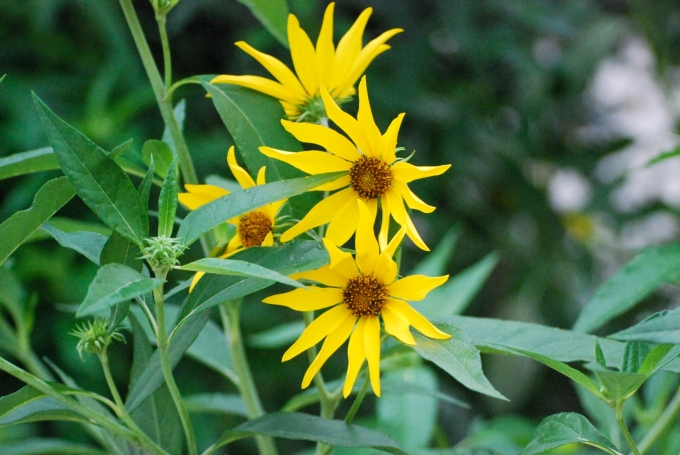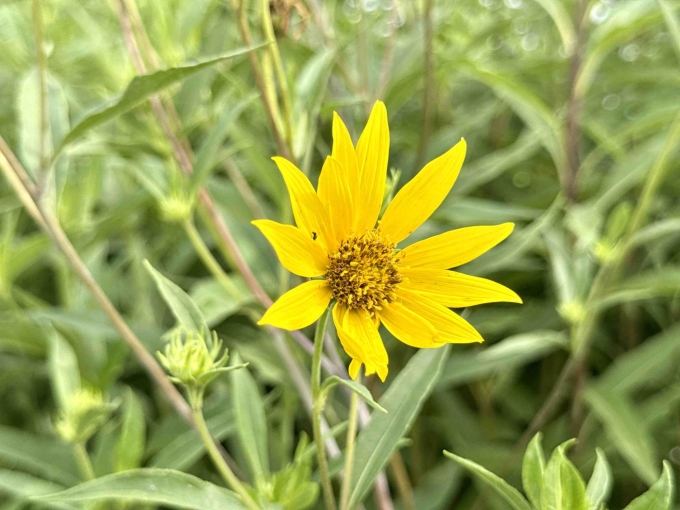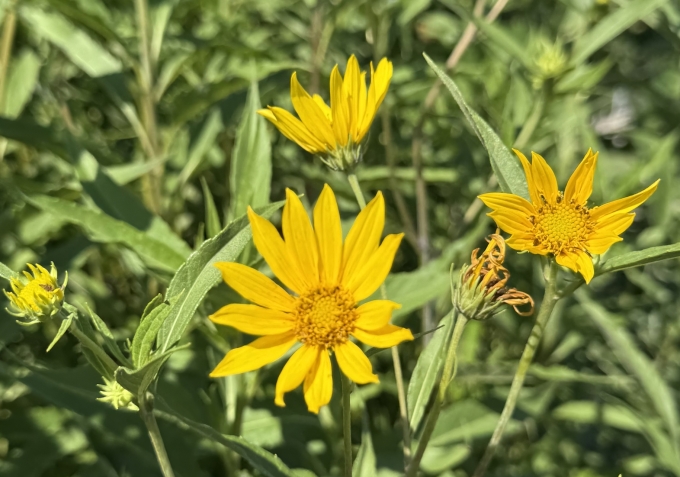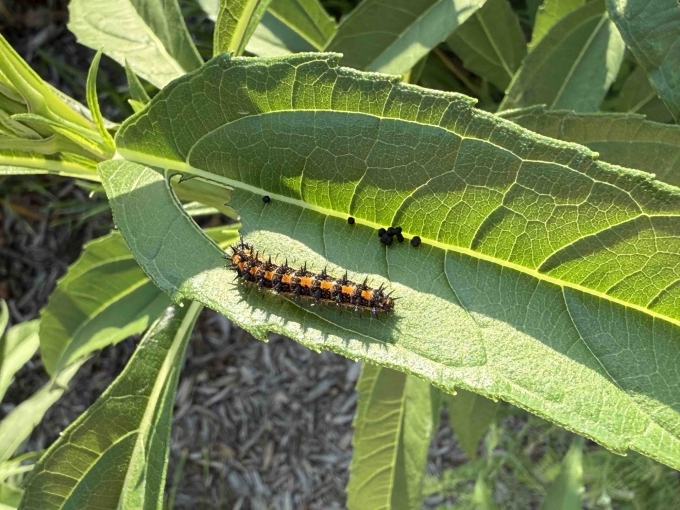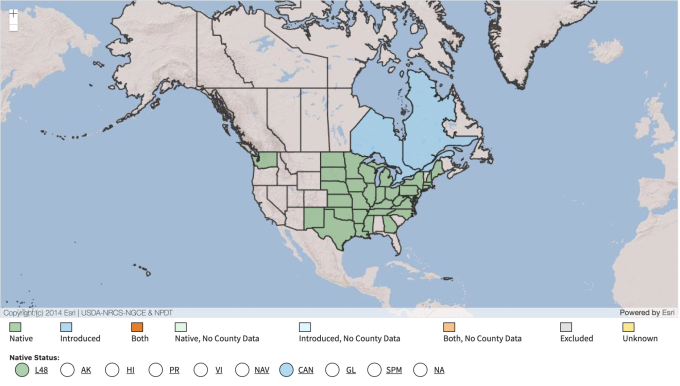Common Name: Sawtooth Sunflower
Family: Asteraceae
Plant Type: Herbaceous Perennial
Native Range: Central and eastern North America, including Nebraska
Hardiness Zones: 3–9
Height: 6.0 to 10.0 feet
Spread: 3.0 to 5.0 feet (can form colonies)
Bloom Time: Late summer to early fall (August to October in Nebraska)
Bloom Description: Clusters of bright yellow, daisy-like flowers with dark centers, arranged along the upper portions of tall stems
Sun Exposure: Full sun
Water Needs: Medium to moist
Soil Preference: Moist, fertile, well-drained soils preferred; tolerates clay and loam
Management Level: Medium
Suggested Use: Naturalized meadows, prairie restorations, wetland edges, large pollinator gardens
Attracts: Native bees, butterflies, birds (especially in fall), beneficial insects
Tolerates: Periodic flooding, clay soils, drought (once established), deer
Notable Features: Extremely tall height, late-season blooms, excellent wildlife value, native to Nebraska
Nebraska Growing Notes:
Sawtooth Sunflower is a robust native species well-adapted to eastern and southeastern Nebraska, especially in areas with moist soils such as lowlands, stream banks, ditches, and rain garden edges. It thrives in full sun and can tolerate periods of drought once established, although it performs best with consistent moisture.
It spreads aggressively by rhizomes, forming dense colonies over time, which makes it more suitable for large-scale plantings, restorations, or areas where containment isn’t a concern. In smaller gardens or formal beds, it may require thinning or root barriers.
Because of its towering stature, it makes a dramatic statement in the landscape and provides critical late-season nectar and pollen for pollinators, as well as seeds for birds like finches in the fall.
Landscape Use:
Ideal for prairie restorations, naturalized wildflower plantings, stormwater basins, and habitat gardens. Use at the back of large beds or in areas where vertical interest and pollinator support are desired. Combines well with Joe-Pye Weed (Eutrochium), New England Aster, Indian Grass (Sorghastrum nutans), and Big Bluestem (Andropogon gerardii).
Caution:
Not toxic to humans or animals. However, can spread aggressively, best used where natural spreading is desirable or easily managed. Its height and spreading habit may overwhelm shorter plants or confined beds.
Garden Locations:
Bed(s) 3, 4, 5, 6, 7, 9, 15
Sources:
https://plants.usda.gov/plant-profile/HEGR4

